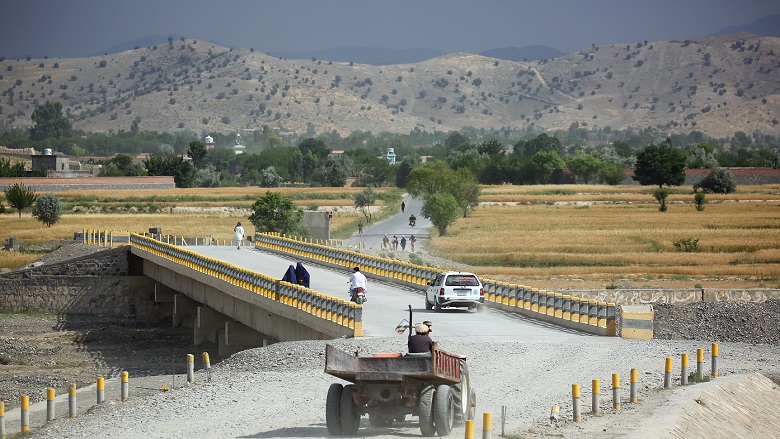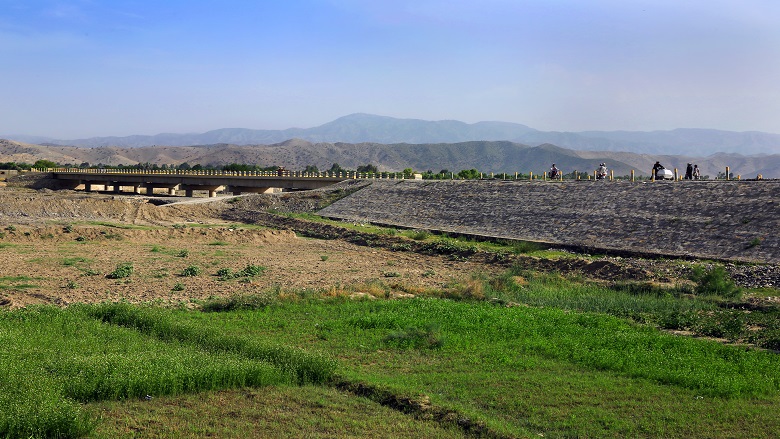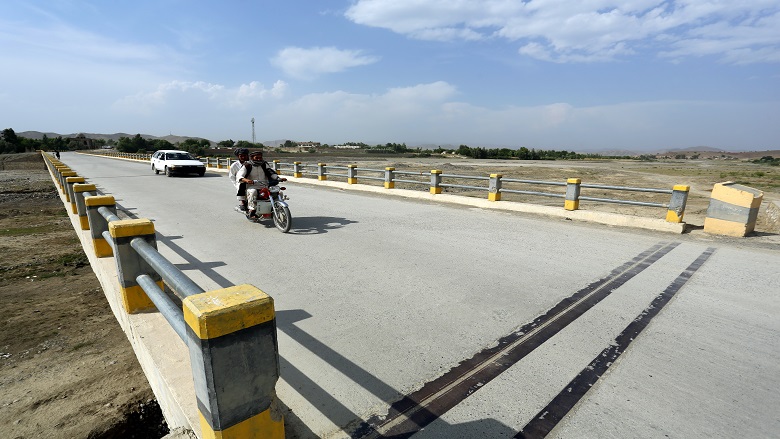KHOST CITY – Cars drive by the crowded area near the local mosque, close to Zakokhil bridge. Amidst the crowd stands Sakhi Jan Sarhadi, 70, a retired government official living in Lakan Kamar village. He is recalling the hardships the villagers faced before the bridge was built.
“Before the bridge was built in this village, people had lots of problems crossing from one side to the other side of the river, especially patients,” Sakhi Jan Sarhadi says of Zakokhil bridge over the Lakan River.
Sarhadi recounts how some people died during the floods before the bridge was built. At that time, Lakan Kamar villagers faced difficult challenges during winter and the beginning of spring. During the rainy season, crossing from one side to the other side of the river became a difficult and dangerous task.
The bridge, Sarhadi says, has resolved these problems, including reducing transport costs to Khost city center from 200 afghanis (about $3) to 50 afghanis. “We used to go to other villages far from ours and pass the river, but after the bridge construction it costs us only 50 afghanis to reach Khost center.”
Nomar Shah, Head of the Public Works Directorate in Khost Province, reaffirms the difficulties villagers had earlier: “People had lots of problem reaching their destination, especially students and patients. They had to spend a lot of time to reach the center of the province.”




